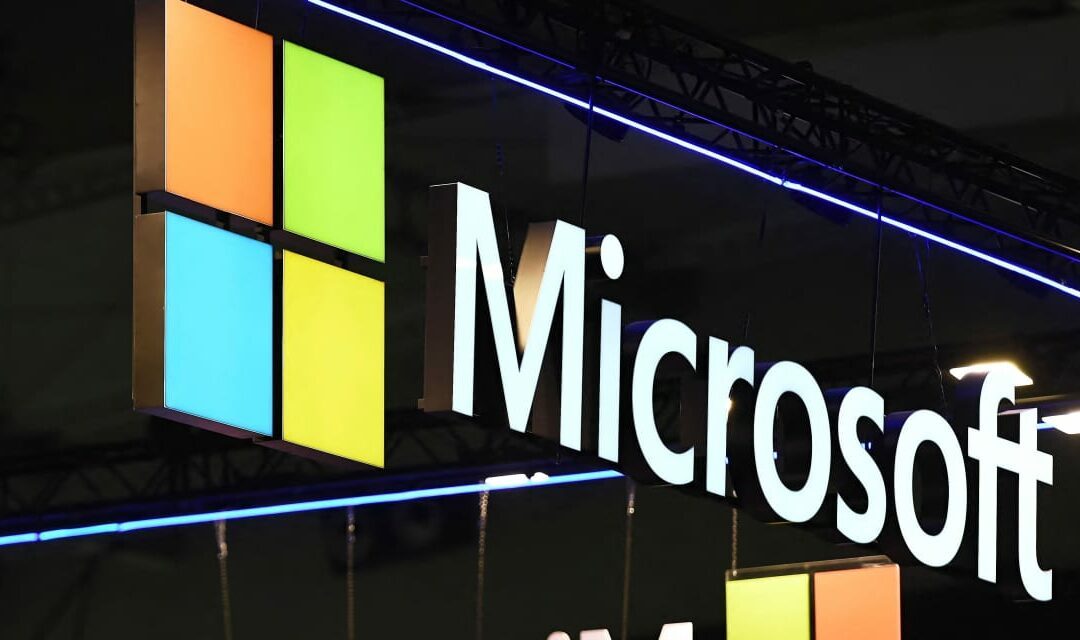It’s almost time for investors to find out more about the next leg of Microsoft Corp.’s artificial-intelligence growth.
The technology giant became a poster child for AI last year thanks to its investment in OpenAI, the creator of the popular ChatGPT chatbot. And the AI revolution seems to already be helping Microsoft’s
MSFT,
Azure cloud-computing business, which has been seeing better trends than Alphabet Inc.’s
GOOG,
GOOGL,
Google Cloud.
But while Microsoft appears to be winning AI workloads in the cloud, the stock’s AI bull case stretches far beyond that. The company has been infusing AI into its software products with its Copilot technology, and it began making this available to enterprise customers in November. Investors could start getting hints about the financial impacts when Microsoft posts fiscal second-quarter results Tuesday afternoon.
See also: Microsoft closes above $3 trillion market value for the first time
“We continue to expect that Copilot will impact revenue growth in a bigger way in [the second half of the calendar year], but based on our expert discussions, the interest level in Copilot is extremely high and the question is when, not if, adoption will start to ramp in a more material way,” Evercore ISI analyst Kirk Materne wrote in a recent note.
Guggenheim analyst John DiFucci added that Wall Street was hoping for “perhaps quantitative” indications on how Microsoft 365 Copilot has been performing. But whether Microsoft’s numbers highlight the impact is another story.
“[W]e would expect any indication to be qualitative in nature as the Office business benefits from other (more significant) tailwinds, including a combination of broad price increases and renewals of previously discounted deals at a higher price,” DiFucci said.
He said he anticipates that Microsoft’s management could offer similar qualitative messaging around how OpenAI is helping Azure. And thinking big picture, the company will post a “strong” December quarter and give March-quarter guidance that’s “at least in line” with expectations for the critical Azure, Office and Windows businesses, he added.
Read: The busiest and most crucial week for fourth-quarter earnings is here. These 5 companies will do the heavy lifting.
Morgan Stanley’s Keith Weiss echoed the prediction that generative AI signals would be more qualitative than quantitative, but he doesn’t think that approach should warrant frustration.
“We remain convinced investor patience will be rewarded,” he wrote.
The stakes are high heading into Microsoft’s report, Guggenheim’s DiFucci added: “If we are right and MSFT outperforms expectations, then it will likely benefit the entire software sector.”
Citi Research’s Tyler Radke is similarly upbeat ahead of the report, agreeing that AI could be a tailwind.
“We expect a solid beat and raise and believe improving IT budgets, partially driven by [generative AI] where MSFT is in a leadership position with multiple monetization vectors can drive a durable multi-year reacceleration in top/bottom line growth,” he wrote.
Analysts expect Microsoft to see 10% growth in its productivity and business-processes unit, which includes Office. The More Personal Computing segment, which houses Windows and Xbox, is projected to have increased revenue by 18%.
The FactSet consensus also calls for 18% growth in revenue from Intelligent Cloud, which includes Azure. Revenue from Azure itself is expected to rise nearly 28%, or about 27% in constant currency.
Of course, there is a flip side to having strong AI positioning, as companies that are setting themselves up well to capitalize on the trend have to spend money to do so.
“Investments in AI, integration of Activision and lapping of accounting changes are expected to pressure gross margins,” wrote Morgan Stanley’s Weiss, who thinks the company will end up seeing a 68.2% gross margin for the fiscal year, down 70 basis points from a year before.









